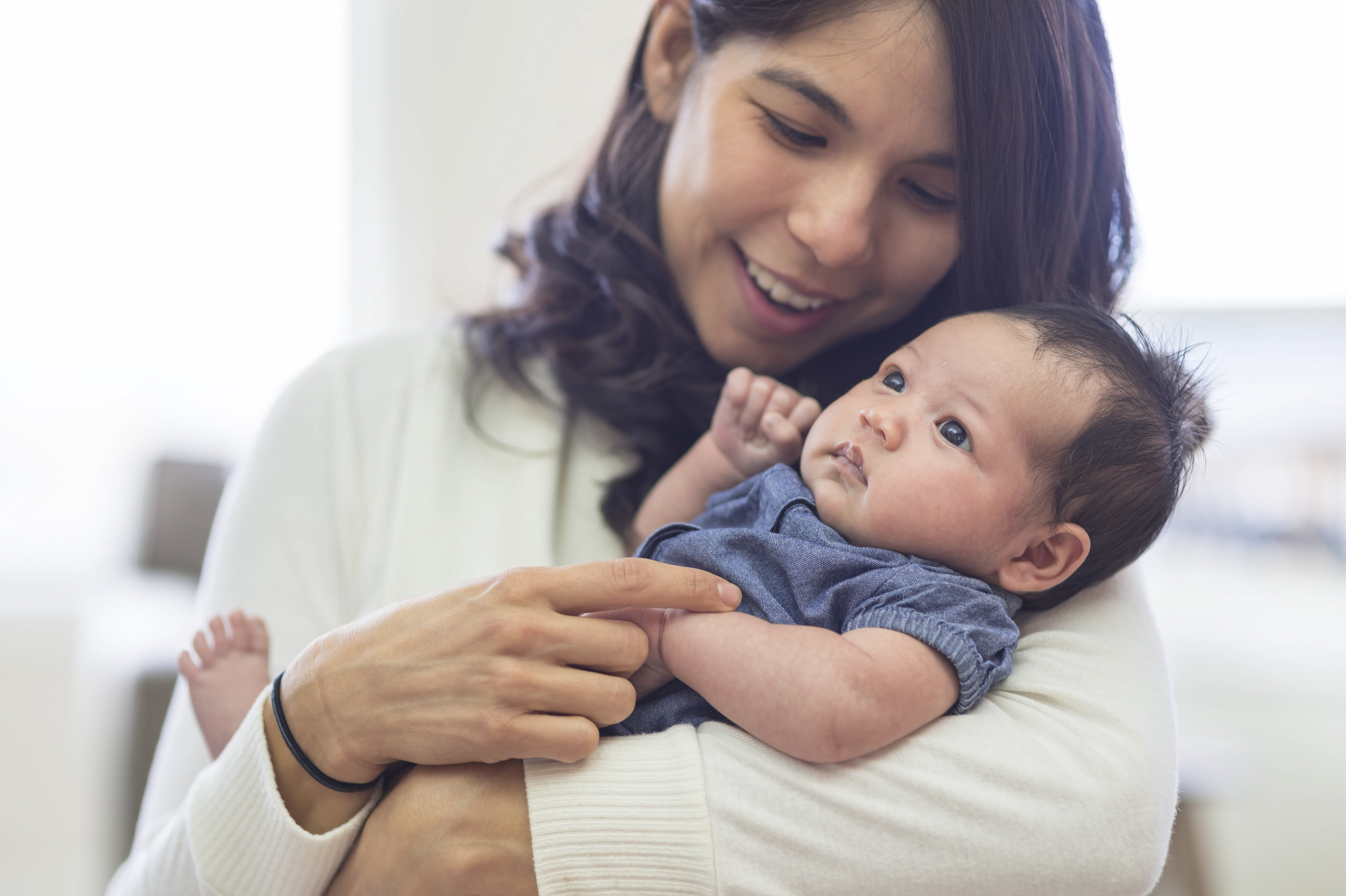Sudden unexpected infant death (SUID) is the term used to describe all sudden, unexpected deaths in babies less than one year of age. Sudden infant death syndrome (SIDS) was the term commonly used in the past. Over the last decade, however, the term is no longer used on death certificates. Instead, after investigation the cause of death is either identified or classified as “undetermined”. Although sudden unexplained death is uncommon in newborn babies and can occur at any time in the first year of life, its incidence peaks in babies between 2 and 4 months of age and is more common in premature or low birthweight infants, among Canada’s Indigenous populations and in low-income communities.
The vast majority of sudden infant deaths during sleep are caused by threats to breathing, such as accidental suffocation or strangulation in bed. The risk factors for unintentional threats to breathing are similar to the risk factors identified in previous research on SIDS.
Keeping your baby in a safe environment
Safe sleep
Babies should sleep alone, on their back and in a crib, cradle or bassinet that meets current safety standards and is free of soft items. Broken cribs or older cribs that do not meet current safety standards may increase the risk of unintentional injury to your baby.

Sleep positioners, rolls, pillows or wedges are not recommended because they can increase the risk of suffocation. Infant sleep products that attach to an adult bed are also not recommended.
It is also best for your baby’s crib or bassinet to be in your room for the first 6 months of life. However, bed-sharing with an adult or another child can put infants at greater risk of suffocation or entrapment, especially in the first 4 months of life and for low birthweight or premature infants.
Make sure that all caregivers and babysitters are aware that they must put your baby to sleep on their back in their crib or bassinet. Sleeping on a firm mattress designed for an infant on their back is the safest sleeping practice for your baby. This applies not just to night-time sleeping but also to naptime and when travelling. Products that keep your baby in a seated position are not intended for sleep, and it is best to transfer a sleeping child to a crib or bassinet. Soft mattresses, couches and waterbeds are unsafe places for your baby to sleep. Soft bedding and pillows can block your baby’s nose and mouth and therefore can interfere with their breathing. Avoid placing soft materials such as quilts, comforters or sheepskins under your baby when they sleep. Keep pillows, stuffed toys and other soft objects out of their sleeping environment. Avoid bumper pads and loose bedding.
Use a firm crib mattress, covered by a tightly fitted sheet. Placing blankets over the top of the crib to block light is not recommended. If a blanket is used to cover your baby, a thin, lightweight blanket is best. If you swaddle your infant, they should always be placed on their back, ensuring the blanket is away from their mouth and nose. Once your baby begins rolling over, they should no longer be swaddled.
Avoid overheating
Avoid overheating your baby. Keep them lightly clothed for sleep in fitted sleepwear. Additional blankets or sleep sacks that are too large or too tight for your infant are not recommended to avoid overheating and to reduce the risk of suffocation or entrapment. Make sure their room is at a comfortable temperature for a lightly clothed adult.
Keep your baby in a smoke-free environment
Smoking during pregnancy puts a baby at risk for sudden unexplained infant death. Exposing a baby to second-hand smoke, including from cannabis, after they are born also increases the risk. Keep your baby in a smoke-free environment.
Breastfeeding
Breastfeeding for at least 2 months reduces the risk of sudden unexplained infant death. The longer that your baby is breastfed, the more protected your baby will be. Exclusive breastfeeding is recommended for the first six months of life.
Home monitors
Infant monitors used to measure breathing, heart rate or movement have not been shown to reduce the risk of sudden unexplained infant death. If used, they should not replace other safe sleep interventions.

